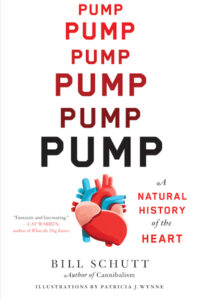 Broken heart, in a heartbeat, bottom of one’s heart, half hearted, change of heart, heart is in the right place, heart of stone, heart of gold, heavy heart, lose one’s heart, young at heart… It would be difficult to think of another part of any anatomy that figures so largely as the heart. Aristotle thought it to be the most important of all the organs and the location of the soul. Fyodor Dostoyevsky declared that it was through the heart and not by reason that we understand Nature, the soul, love, and God. And, in the American situation comedy Happy Days, the Fonz helped Potsie to write a song about the heart to demonstrate to a professor that he did in fact comprehend its essential anatomy (you can thank Mrs. Naturalist for this last example as she’s much better informed about popular culture than I am).
Broken heart, in a heartbeat, bottom of one’s heart, half hearted, change of heart, heart is in the right place, heart of stone, heart of gold, heavy heart, lose one’s heart, young at heart… It would be difficult to think of another part of any anatomy that figures so largely as the heart. Aristotle thought it to be the most important of all the organs and the location of the soul. Fyodor Dostoyevsky declared that it was through the heart and not by reason that we understand Nature, the soul, love, and God. And, in the American situation comedy Happy Days, the Fonz helped Potsie to write a song about the heart to demonstrate to a professor that he did in fact comprehend its essential anatomy (you can thank Mrs. Naturalist for this last example as she’s much better informed about popular culture than I am).
In his new book Pump; A Natural History of the Heart by Dr. Bill Schutt examines the natural history of the heart – not just as it exists in human beings but in a wide range of creatures small and large, from the biologically simple to the very complex.
Compared by early reviewers to the popular science works of Mary Roach and Bill Bryson, Dr. Schutt’s Pump follows upon his earlier, highly informative as well as entertaining books as Cannibalism; A Perfectly Natural History and Dark Banquet; Blood and the Curious Lives of Blood-feeding Creatures (yes, despite their respective subjects, I stand by my descriptor of “entertaining” for both these titles) in making accessible to a wide reading audience a subject that many may not either know how to, or think to, approach in a wide-ranging manner.
Available from:
If you enjoyed reading this, please consider signing up for The Well-read Naturalist's newsletter. You'll receive a helpful list of recently published reviews, short essays, and notes about books in your e-mail inbox once each fortnight.

